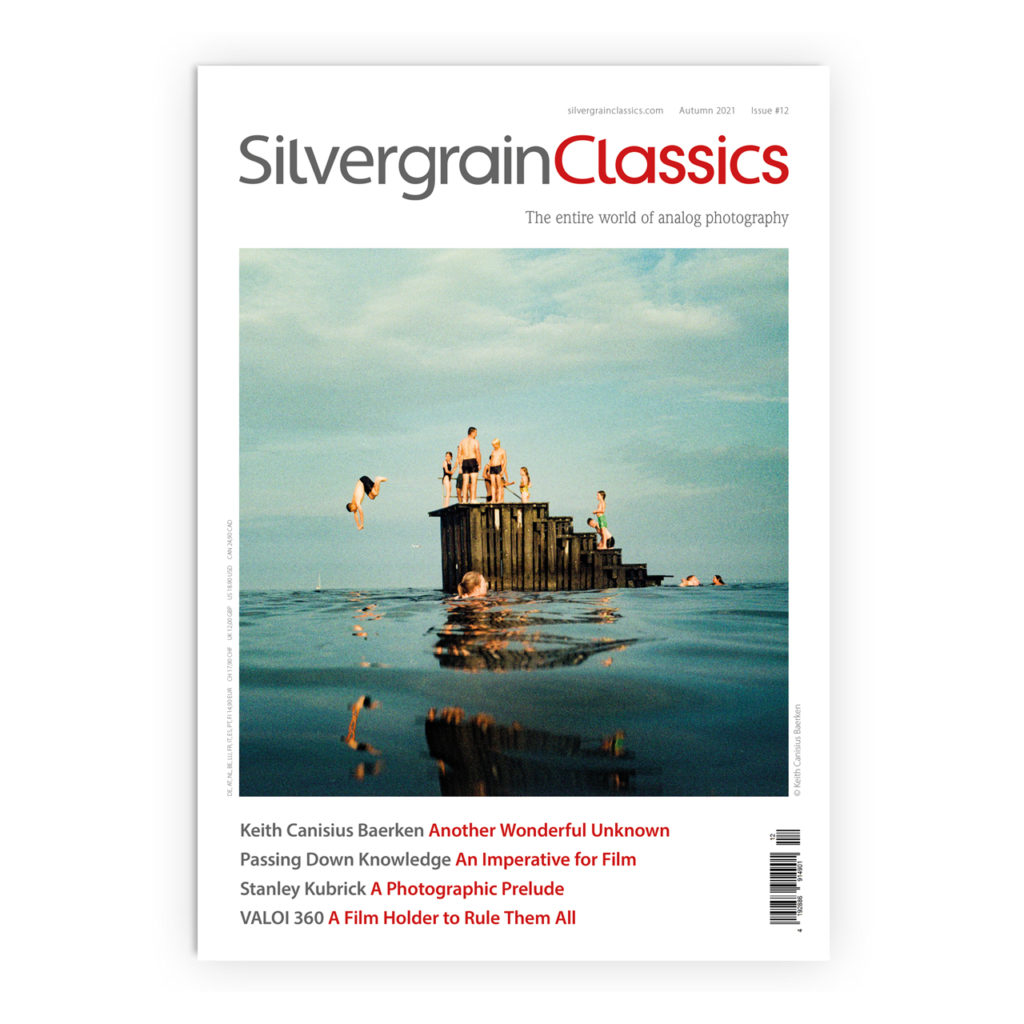1950’s Studio Course
by Christopher Osborne.
A few weeks ago the folks at the the SilvergrainAcademy ran a 1950’s Studio Workshop. I arrived at the SilvergrainAcademy in Bad Nauheim at 10 am, just in time for the start of the course…
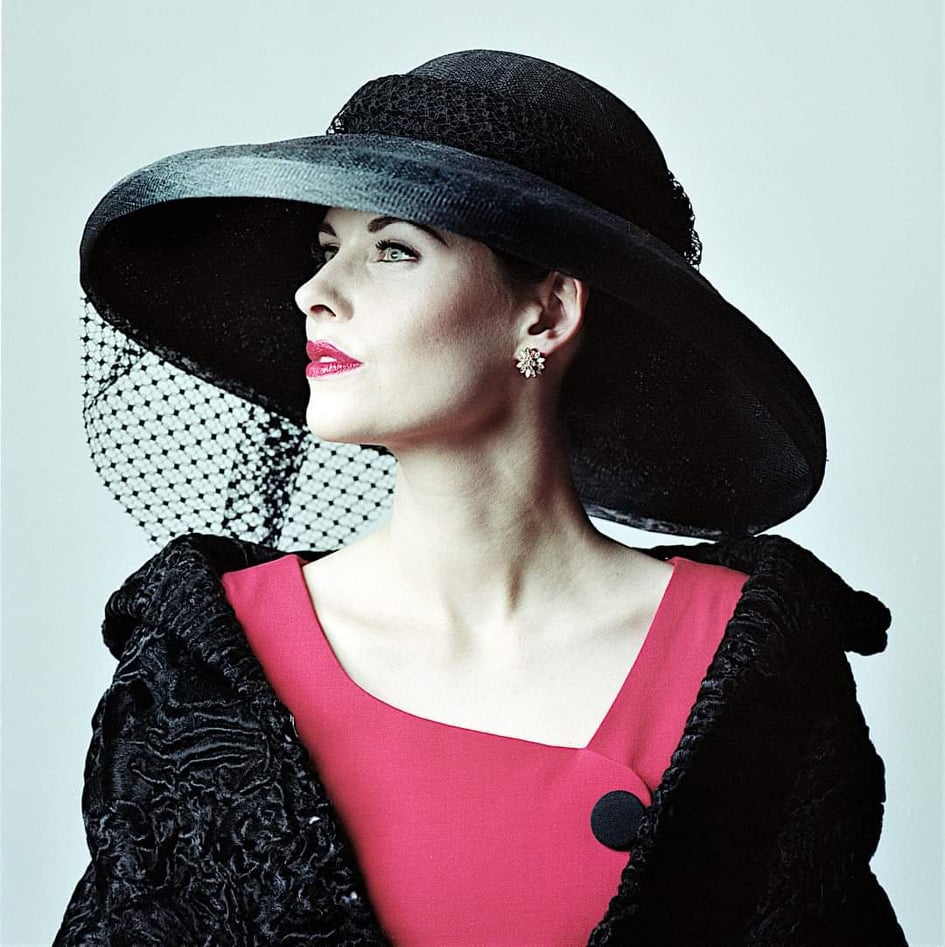
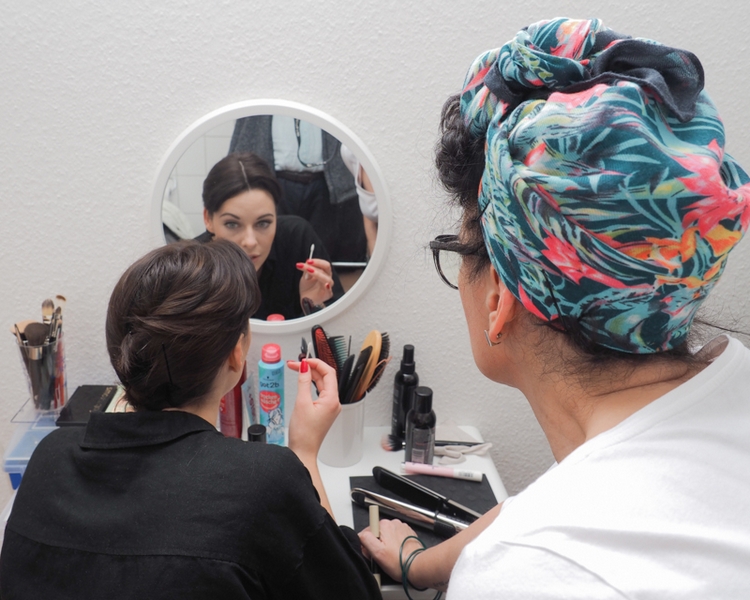
The folk at the Silvergrain Academy have started running courses again. A few weeks ago I was able to witness day one of the 1950’s Studio Workshop.
I arrived at the SilvergrainAcademy in Bad Nauheim at 10 am, just in time for the start of the course. The attendees were drinking fresh coffee in the meeting room, and at the same time Lenchen the makeup artist was preparing model Juliette for the shoot.
Marwan El Mozayen was the course leader and started by briefing the photographers on what to expect from the day.
Day 1 was about making images, with every participant able to shoot in a studio environment. Once the photographers moved into the studio and Marwan explained the lighting setup and how to meter for the scene.
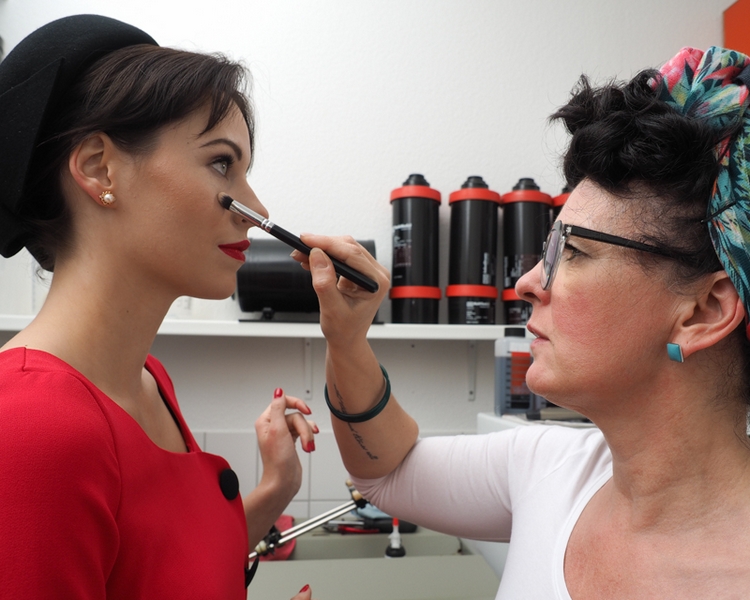
Juliette came into the studio, and her transformation was incredible. She was wearing a vintage 1950’s bright red dress and had makeup and a hairstyle to match. The folk at SilvergrainClassics only use experienced models. This lightens the load on the photographer and the benefit of this approach shows in the results.
Marwan set off shooting on a Hasselblad 501 with a 70mm film back loaded with E6 reproduction film which was cross-processed in C41. He demonstrated how to use the camera and how to interact with the model.
Next, each attendee shot a roll of Kodak Portra film, either on the Hasselblad or on their own camera. One attendee used a 1930’s Voightlander camera that did not have a flash port. He handheld several shots, and opened the shutter and called for the flash to be triggered. Then he closed the shutter. which were handheld. Because the background light onset was very low, only the strobe light was recorded on the film. Every shot was super sharp.
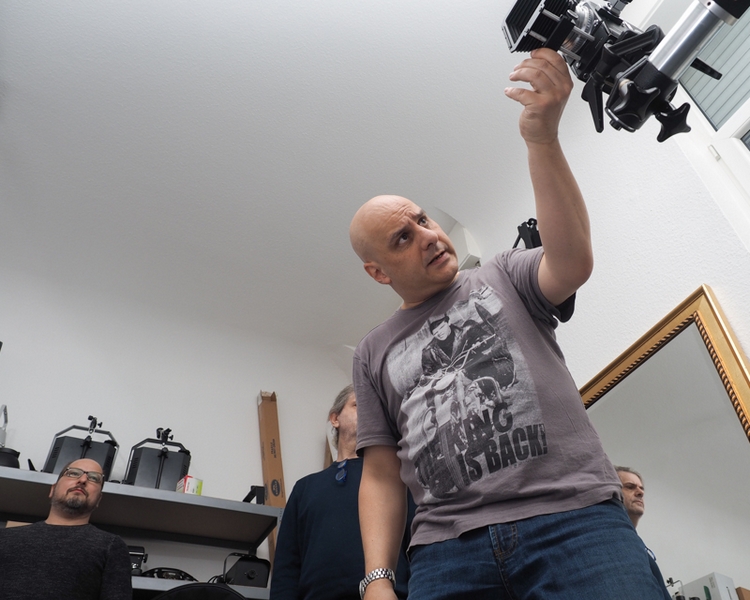
I became the lab boy and spent much of the afternoon in the darkroom. I managed to develop 14 C41 rolls of film during the afternoon, a mixture of 70mm, 120 and 35mm film.
As each batch of film came out of the drum, the attendees crowded around the drying cabinet to see the results of their work.
I did watch the proceedings in the rare breaks between film development. An interesting dynamic had developed with the group, and it was interesting to watch the participants learning from each other. The participant with the Voightlander took several shots from a low perspective. And in the section where Juliette was wearing a wide-brimmed hat, Tia made sure that her red nails were in the shot. In addition to a studio experience, this course was also about increasing everyone’s visual vocabulary.
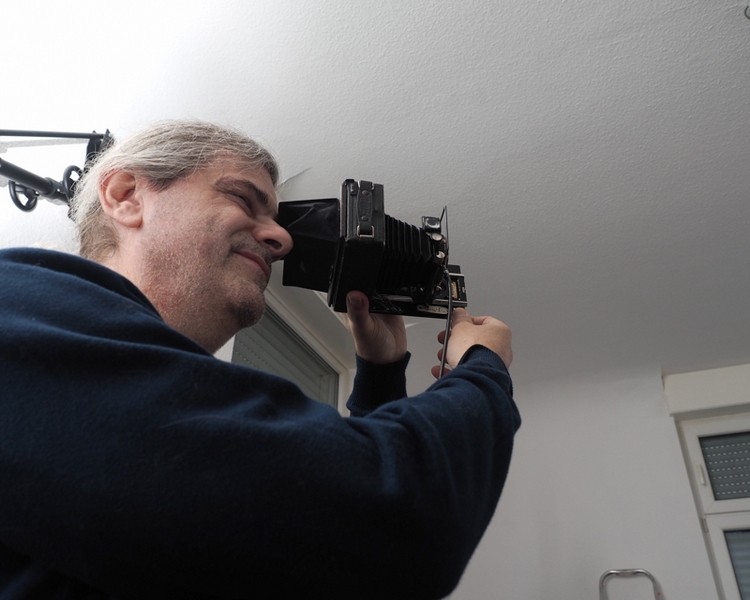
The day ended with everyone looking at the results on the light table in the Meeting Room. Marwan had a smartphone app that magically turned images from negatives into positives.
Marwan’s experience as a studio and portrait photographer shows through, and I did not see a question that he couldn’t answer. He is extremely knowledgeable on anything analogue. He is a very enthusiastic and diligent teacher, who is always happy to pass on his knowledge to photographers of all levels.
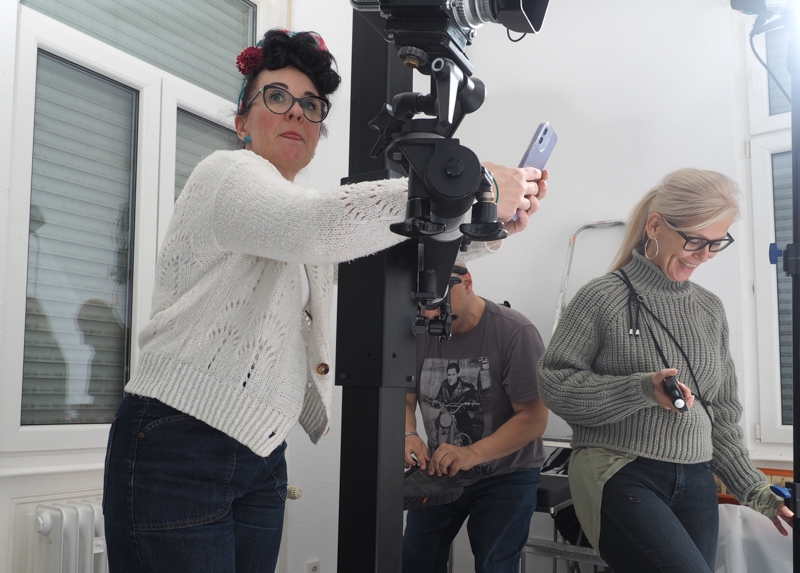
Day 2 of the course is aimed at post-production. The attendees were offered a choice between digital scanning and printing or contact printing and then printing a favourite image in the darkroom.
This course decided to work in the digital route. After the scans were made, they decided that they would like to see the results darkroom printed.
Marwan took them into the darkroom and helped direct the process of calibrating the enlarger to achieve the correct colour balance.
Once the colour settings had been established for the enlarger, each attendee exposed some prints and fed them into the Thermophot processing machine. Just a couple of minutes later some very good touch dry prints were coming out.
The really interesting thing about this session was the attendees deciding to move from a hybrid analogue/digital workflow to an all-analogue process. The final word goes to one attendee who said at the end of the day said “That was great. Now you have turned me into a colour darkroom junkie”!
Images © Christopher Osborne 2021
This article on Scanning and hybrid workflow might laso be of interest https://silvergrainclassics.com/en/project/scanning-and-hybrid-workflow/
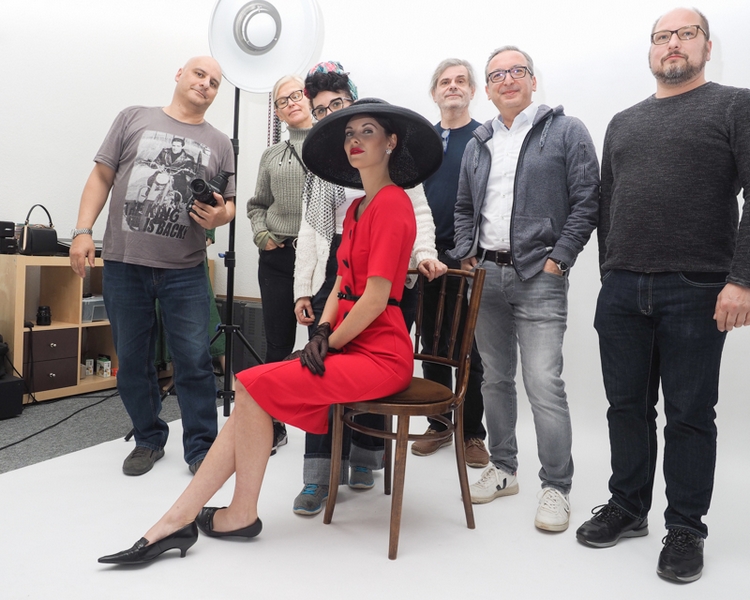
We have a favour to ask. We want to make these online articles free to the world. We see it as our contribution to the photographic community. You can help by subscribing to our awesome analogue photography magazine – https://shop.silvergrainclassics.com/subscriptions/

